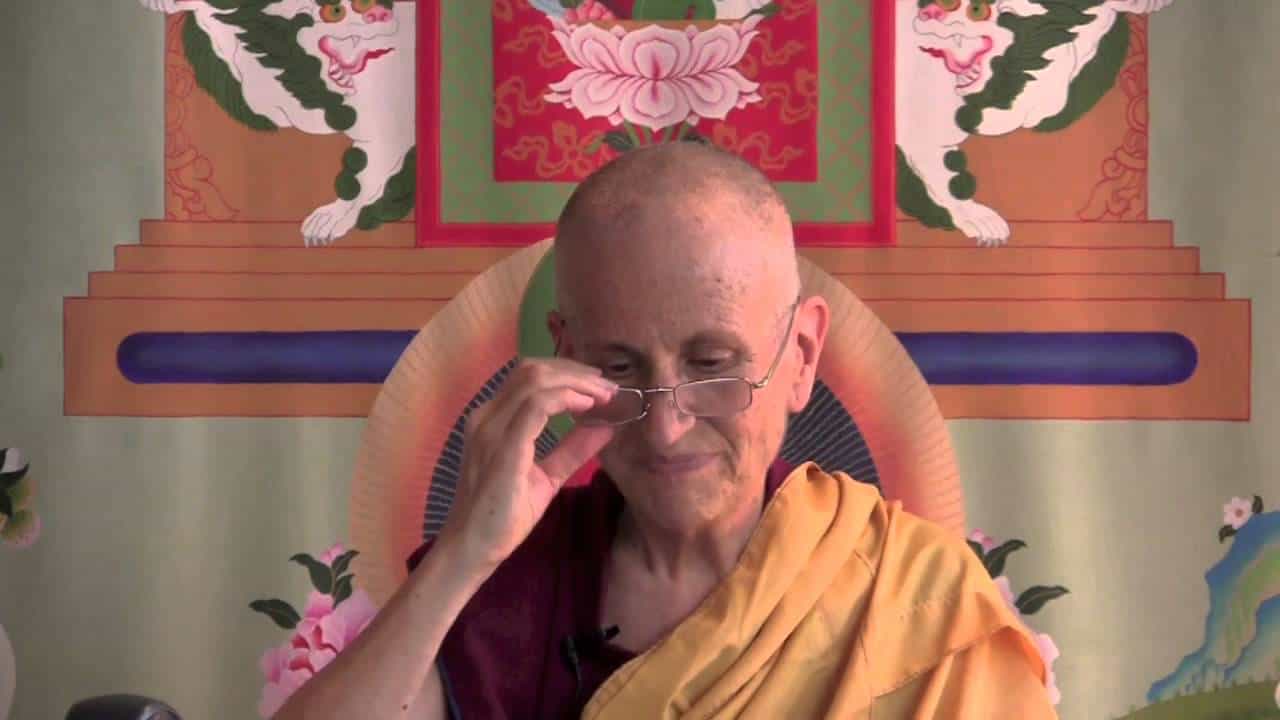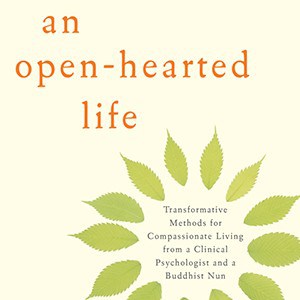Verse 86: Powerful ambrosia
Part of a series of talks on Gems of Wisdom, a poem by the Seventh Dalai Lama.
- The importance of the lamrim and thought training texts
- Studying practical teachings well so we can use them when we need them
- The value of listening to teachings again and again
Gems of Wisdom: Verse 86 (download)
What is like a powerful ambrosia of which one can never drink enough?
The sublime oral instructions that reveal the inner meaning of Dharma.
[In response to audience] So part of that inner meaning is bodhicitta.
The “sublime oral instructions….” The oral instructions are usually things that are passed down from teacher to student. They aren’t necessarily the classics, like the ancient texts—the treatises from India, the commentaries in Tibetan—but they’re more like practical teachings, like the lamrim (the stages of the path) or lojong (the thought training). Things that are very easy and practical to put into practice right away. So these are like ambrosia that you can never drink enough of because they’re so practical, they’re so useful in your daily life, and they’re not that difficult to understand. We all notice that when you study the treatises and the commentaries there are a lot of long sentences and difficult vocabulary and new concepts and things like that.
Some of the oral instructions are from tantra and those can get pretty complex, too, but here talking about sutrayana. If you talk about the short lamrim texts—or the thought training texts—those are things that you can sit down and read and get some meaning from without too much difficulty and be able to apply it to your life very readily. So I think it’s quite important,especially in the West, that people learn these teachings and really practice them.
For me, anyway, this is what I always fall back on when my mind is going ballistic and I need some help. There are methods in these teachings about, “think like this, look at the situation like that, do this, and don’t do that.” And I find it’s very, very helpful. So he’s really encouraging us to listen to these teachings and to study them as much as we possibly can.
Sometimes you’ll meet people who will say, “Well, I’ve heard that already….” Kind of like they’ve mastered it simply because they’ve heard it. So, no, it’s not like that. And you’ll see in India people who have heard a teaching many, many times (and sometimes taught it themselves), they will go and listen to those teachings. Like in the lamrim transmission His Holiness has been giving. And we’re doing one of those teachings on Friday nights. It’s a fairly simply, straightforward text in terms of understanding. Putting it into practice is another ballgame. But understanding it is not that difficult. And yet everybody comes to listen and do that.
It’s good, as much as we can, to listen to the teachings. Of course, not just listen, but put into practice. And to make that thing between listening and putting into practice—there has to be a thing of “remembering them.” Okay? I find this over and over again that people will read a Dharma thing, you can talk with them about it, they can discuss about it, it makes sense, they understand it, but then when they have a problem…. “What do I do? What do I do?” It’s like they’re not remembering what they had studied. Or somehow in their mind they’re not linking what they had studied to the present situation. Somehow Dharma is nice to study, but practice is another thing, and when it comes to practice, you have a problem and it’s, “I don’t know what to do.” So it’s really important to think about these teachings very often and meditate on them, put them into practice in our daily lives, and think about them. Then as soon as we have a problem, instead of going, “AAHHHH I don’t know what to do! Help me!” to sit down and think: “Okay, I’ve been studying the Dharma for a while, what of the teachings that I’ve learned can help me in this kind of situation?” And then you start remembering in the lamrim, in the thought training, the teachings you heard and what kind of situations that it was recommended that you apply those in, then you think about those and apply them to the situation right in front of your nose. And then that’s how Dharma really helps. If we can’t remember the teachings, then lots of notebooks full of things and our mind is like a wild camel. Can’t control it. Nothing to do.
And the thing is, nobody else can do that for us. You can hire somebody to garden, you can hire somebody to do your accounting books, you can hire people to cook and do all sorts of things. You cannot hire somebody to practice for your. And you can’t hire somebody else to learn the Dharma for you. These are things we have to do ourselves. We learn from teachers, but then we have to put that into practice. And nobody else can make us do that. As you practice and you see that the teachings work, then you become much more eager to hear more teachings.
Maybe that’s the “ambrosia” point. When you practice the Dharma it works, it helps your mind, and then it’s like, “Yum yum! I want more!” And then hearing teachings and thinking about them takes on a whole different meaning than it did at the very beginning when you’d hear these things but you were kind of clueless. But if you really practice it, you change.
[In response to audience] The kinds of discussions that we have at the Abbey that we often do in short retreats where we’ll have a teaching and then afterwards we’ll have discussion questions to meditate on and then breaking into small groups and discussing those, and those questions are always based on how do you put this into practice, and how does this relate to your life. And that becomes a very good tool to think about how to practice these, and to hear how other people practice and what works for them, and then that gives you more confidence. And then when you share your experience you also give other people more ideas about how to work with their mind when they have a difficulty. Yes. For sure. Those discussions are very, very helpful.
And in your meditation, making examples from your life. That’s very crucial. Because if you don’t do that it’s just theoretical. If you meditate and you just say, “Oh, all my experiences are due to my past karma: my happy experiences are due to my virtuous karma, my unhappy experiences are due to my nonvirtuous karma….” You say like that in your meditation…. That will start to affect you, but the way to have it really affect you is: “This morning somebody criticized me, and I feel hurt,” or, “I feel angry. This person criticizing me is a result of the negative karma that I myself have created under the influence of my own self-centeredness. If I don’t like this happening to me I need to change how I speak and behave towards other people. But right now there’s no sense blaming the other person, because this is simply a karmic return on the actions I’ve done.” And so with that very specific incident in your mind then the teachings really start to have meaning.
At first your mind resists it: “Oh yes, it’s my negative karma, but this person is always picking on me unfairly!” [laughter] And then you have to come back. They’re just the cooperative condition. The principal condition is how I speak to other people, and how I’ve spoken to other people in the past, and the karma I’ve created in the past. So why am I blaming somebody else?
[In response to audience] That’s the thing. If somebody says something to you that you don’t like and you say something back to them because you’re mad, you’re perpetuating your own pain. Just creating more and more of that karma.
That doesn’t mean that we just shut up and stuff our anger inside. Sometimes you need to discuss a situation with somebody and so on. But what it does stop is this angry mind that blames somebody and sees ourselves as a victim. Because that mind doesn’t get us anywhere.
And like you said, you scold them back and, well, what do we expect? We’re creating more of that same karma.
Venerable Thubten Chodron
Venerable Chodron emphasizes the practical application of Buddha’s teachings in our daily lives and is especially skilled at explaining them in ways easily understood and practiced by Westerners. She is well known for her warm, humorous, and lucid teachings. She was ordained as a Buddhist nun in 1977 by Kyabje Ling Rinpoche in Dharamsala, India, and in 1986 she received bhikshuni (full) ordination in Taiwan. Read her full bio.


